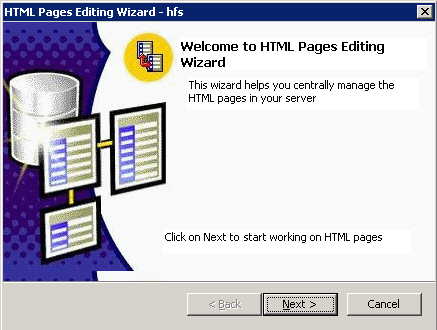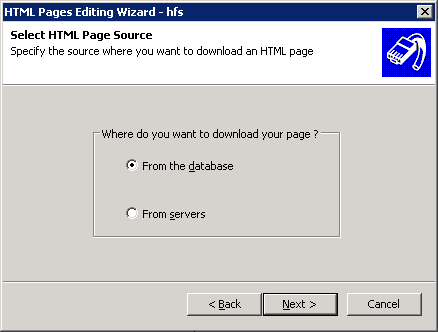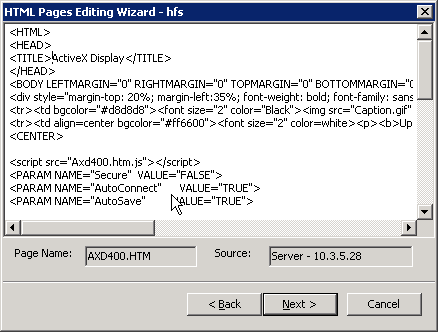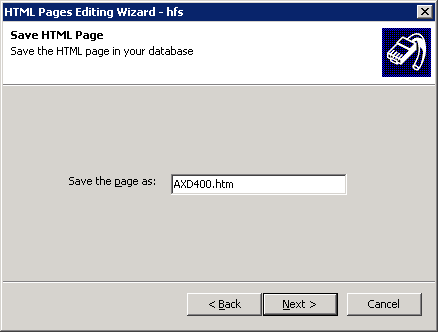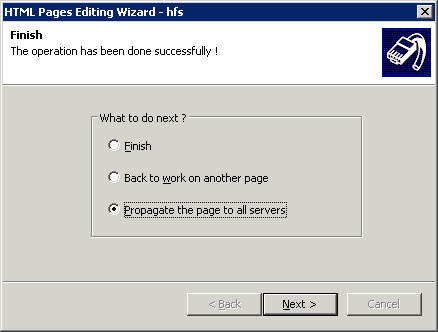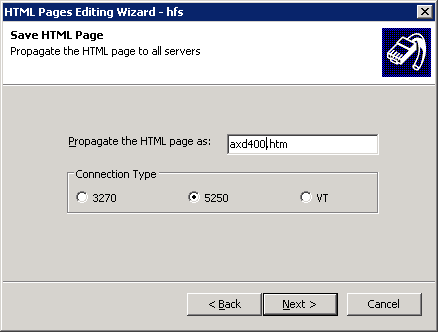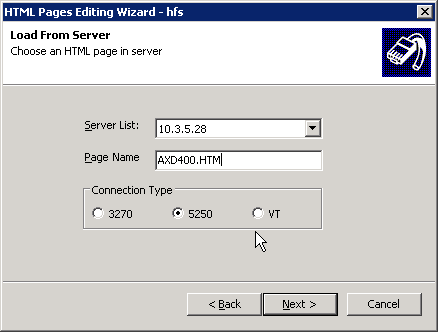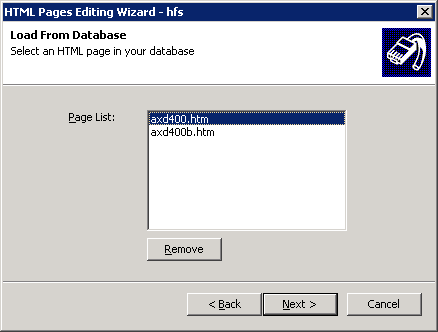Using the HTML Pages Editing Wizard
The wizard guides you through the following steps:
|
1. |
Welcome Screen.
Click Next to continue.
|
|
2. |
Selecting the source of your page: This step allows you to get a page from the database (if previously saved there) or from
a cluster service machine in the cluster.
|
a. |
If you select From servers, you will get the following next step:
|
• |
The Server List drop-down menu will have a list of all the cluster services defined in your cluster.
|
|
• |
The Page Name field allows you to enter the file name of the page you want to get.
|
|
• |
The Connection Type radio buttons allow you to select the emulation type so that the wizard can know from which folder to get the page.
|
|
|
b. |
If you select From the database, you will get the following next step:
In this step you can select one of the pages already saved in the database to continue to editing it or to delete it from
the database by clicking on the Remove button.
|
|
|
3. |
After selecting the page you want to edit in the previous step, you will get to the following dialog that will allow you to
edit the page:
This step provides with a simple text editing dialog for you to edit the HTML page (or the corresponding JS file for example).
|
|
4. |
After having done with editing, click on the Next button to save the page file in the database. The wizard next step will look as follows:
Type a name or a description of the file under which you want to save the edited page in the database.
|
|
5. |
After having saved the file in the database, you have the option to do the following:
|
• |
The Finish option will end the wizard.
|
|
• |
The Back to work on another page will bring you back to the first step of the wizard to select another page.
|
|
• |
The Propagate the page to all servers allows you to send the edited page to all the machines in the cluster where that page exists. The new copy that you edited
will replace the existing copies on the cluster machines. By selecting this option you get to the following step.
|
|
|
6. |
By selecting the propagate option, the wizard will look as follows:
Type the file name you want to replace in the target machines and select and emulation type. When you click the Next button,
the wizard will send the page to all cluster service machines in the cluster to be copied under the selected emulation folder
with the given file name. If a file with the same name already exists, it will be replaced without prompting. If the file
does not exist, it will be created.
Note that the wizard will propagate the page to all machines and you do not have the choice to send the page only to one server.
This is done because the HTML pages should be the same on all the machines and by propagating to all of them the wizard can
guarantee that the pages are identical on all servers.
|
|
7. |
After propagating a page, you will get again the option to either finish the wizard or go back to work on another page. |
